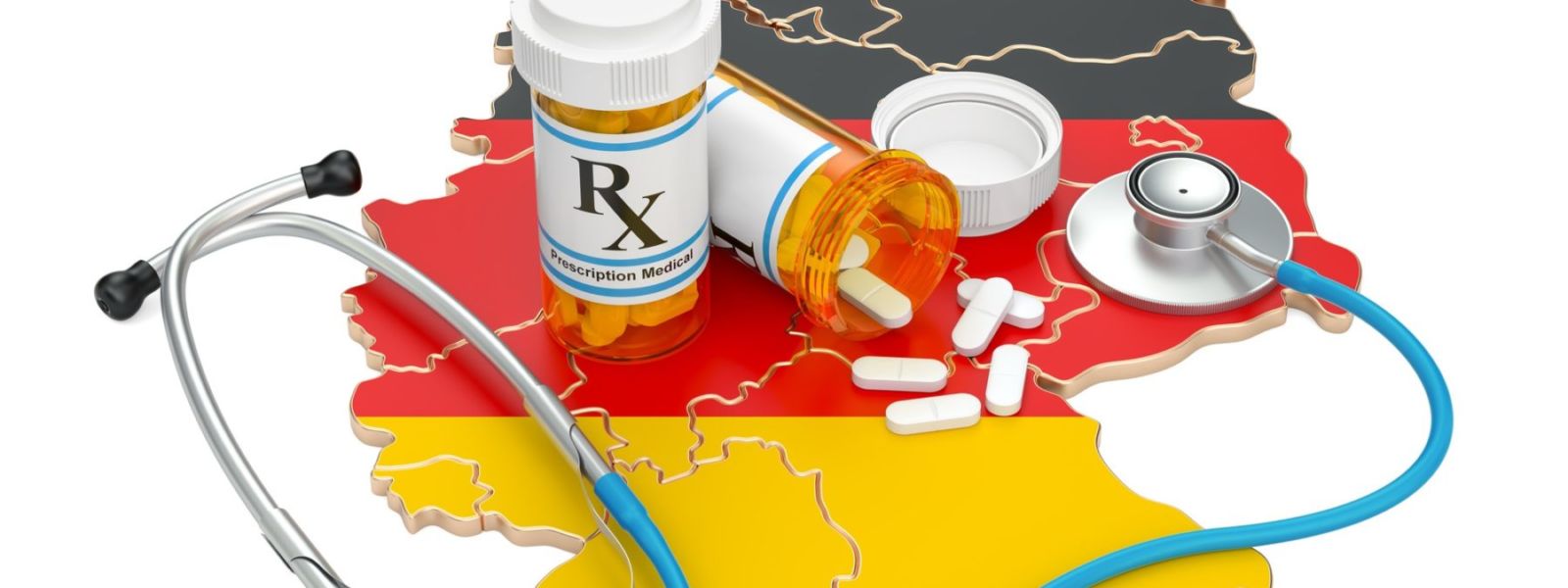MARCH 2021, PERSPECTIVE PAPER
 Matthew Bending, PhD Executive Director of HTA Strategy & UK Practice Lead Value & Development Consulting Evidera, a PPD business |  Kaisa Miikkulainen, MSc Associate Principal Value & Development Consulting Evidera, a PPD business |  Martin Parkinson, MRPharmS Principal Value & Development Consulting Evidera, a PPD business |
Recently, Vertex Pharmaceutical’s triple combination therapy KAFTRIO® (known in US by the brand name TRIKAFTA®), for the treatment of patients with cystic fibrosis with specific mutations, was granted a major benefit rating by the German Federal Joint Committee (G-BA). This is the highest benefit rating given by the G-BA1,2 and is rarely granted; in fact, only three other products have been given this rating3 since the Pharmaceutical Market Restructuring Act (AMNOG) went into effect in 2011.4 This rating has positive implications for Vertex during price negotiations with the statutory health insurance (SHI) funds.
Why Are Major Added Benefit Ratings So Rare?
There are a variety of reasons why pharmaceutical companies typically fail to achieve this rating from G-BA. In order to receive a major benefit rating from the G-BA, companies must demonstrate that their product has additional benefits over and above the comparator specified by the G-BA. This can often be challenging, and sometimes controversial. Medicinal products that use evidence against a different comparator are mostly rewarded a level 5 rating (no proof of benefit), as the G-BA argues that the company did not provide valid data to conduct the benefit assessment. This in turn leads to inclusion in a reference price cluster with no price negotiation.
In the best-case scenario, companies can expect to receive a high benefit rating if they provide head-to-head clinical evidence against the chosen comparator. While this is not always feasible, the G-BA still expects the evidence package to include patient-relevant clinical endpoints such as morbidity, mortality, and quality of life. Data validation, validated patient reported outcome (PRO) instruments, effect size, and confidence in benefit are other key concepts to consider. The potential for bias and the magnitude of statistical uncertainty are key determinants in the G-BA assessment of benefit.
The KAFTRIO triple combination therapy received the major benefit rating because it demonstrated significant efficacy in a clinical study design adhering to the G-BA comparator and patient-relevant endpoints.5 Timing of the completed evidence dossier was also a factor.
Why Was the Outcome Different With This Assessment?
Robust evidence demonstrated improvements in lung function using clinical and patient-relevant endpoints against the appropriate comparator – best supportive care (BSC). The study demonstrated that the treatment was more effective than BSC at improving lung function. Specifically, the G-BA considered the study primary endpoint, pulmonary exacerbations, especially those leading to hospitalization, to represent a clinically relevant endpoint and was therefore regarded as patient-relevant. In addition, the pivotal study conformed to the G-BA’s requirement of a 24-week randomized controlled trial. Overall, G-BA’s assessment found statistically significant advantages in the morbidity endpoints of pulmonary exacerbations and in all the domains of the validated PRO instrument (Cystic Fibrosis Questionnaire-Revised, CFQ-R) with no difference in mortality or adverse effects.1,2
In terms of the dossier submission strategy, it’s important to understand the significance of the European Medicines Agency orphan medicinal product (OMP) designation.6 In Germany, additional therapeutic benefit for OMPs are assumed by virtue of marketing authorization without reference to an appropriate comparator if the annual SHI expenditure remains below 50 million euros.4 For anything above that, manufacturers are required to submit data on additional therapeutic benefit. This means those OMPs are evaluated, and prices renegotiated, in the same manner as all other medicines.4 A critical factor for the rating success was that Vertex submitted a complete dossier during the first stage of submission.3 This streamlined the G-BA assessment process once the threshold was exceeded after the product launched.
Overall, Vertex demonstrated patient relevant value in a way that matched G-BA requirements and was rewarded with the highest rating, a true success story from all stakeholder perspectives.
Key Considerations to Achieve a High Benefit Rating
- Identify and understand health technology assessment (HTA) and payer requirements and align company strategies and evidence generation plans to address the needs of regulators, HTA bodies, and payers
- Develop an integrated scientific advice strategy early in the development program
- Request early advice from HTA bodies during the early stages of product development to meet the HTA requirements
- Carefully consider the relevance of proposed endpoints from an HTA perspective of clinical, patient and economic relevance, trial duration, and comparator. If utilizing best supportive care, ensure it is relevant to the country
- Consider the implications of orphan designation and how it affects the submitted evidence and timing of submissions
References
- Federal Joint Committee (G-BA). Medicinal Product Directive/Appendix XII: Ivacaftor/Tezacaftor/Elexacaftor (exceeding € 50 million limit, cystic fibrosis, combination treatment with ivacaftor in patients aged 12 years and over (heterozygous for F508del and MF mutation)). Available at: https://www.g-ba.de/beschluesse/4707/. Accessed February 16, 2021.
- Federal Joint Committee (G-BA). Supporting reasons to the decision of the common Federal Committee on an amendment to the Medicines Directive (AM-RL): Annex XII – Benefit Assessment of Medicinal Products with new active ingredients according to § 35a SGB V Ivacaftor/Tezacaftor/Elexacaftor (exceedance € 50 million limit, cystic fibrosis, Combination treatment with ivacaftor Patients from 12 years of age (heterozygous regarding F508del and MF mutation)). Available at: https://www.g-ba.de/downloads/40-268-7316/2021-02-18_AM-RL-XII_Ivacaftor-Tezacaftor-Elexacaftor_D-584_TrG.pdf. Accessed February 26, 2021.
- Federal Joint Committee (G-BA). New drug therapy for cystic fibrosis: G-BA awards top marks. Available at: https://www.g-ba.de/presse/pressemitteilungen-meldungen/934/. Accessed February 26, 2021.
- Organisation for Economic Co-operation and Development. Pharmaceutical Reimbursement and Pricing in Germany June 2018. Available at: https://www.oecd.org/health/health-systems/Pharmaceutical-Reimbursement-and-Pricing-in-Germany.pdf. Accessed February 26, 2021.
- Federal Joint Committee (G-BA). Rules of Procedure as of December 16, 2020 of the Federal Joint Committee. Available at: https://www.g-ba.de/downloads/62-492-2323/VerfO_2020-07-16_iK-2020-12-16.pdf. Accessed March 1, 2021.
- European Medicines Agency. Orphan Designation EU/3/18/2116. Available at: https://www.ema.europa.eu/en/medicines/human/orphan-designations/eu3182116. Accessed February 26, 2021.
For more information, please contact
[email protected], [email protected], or [email protected]


